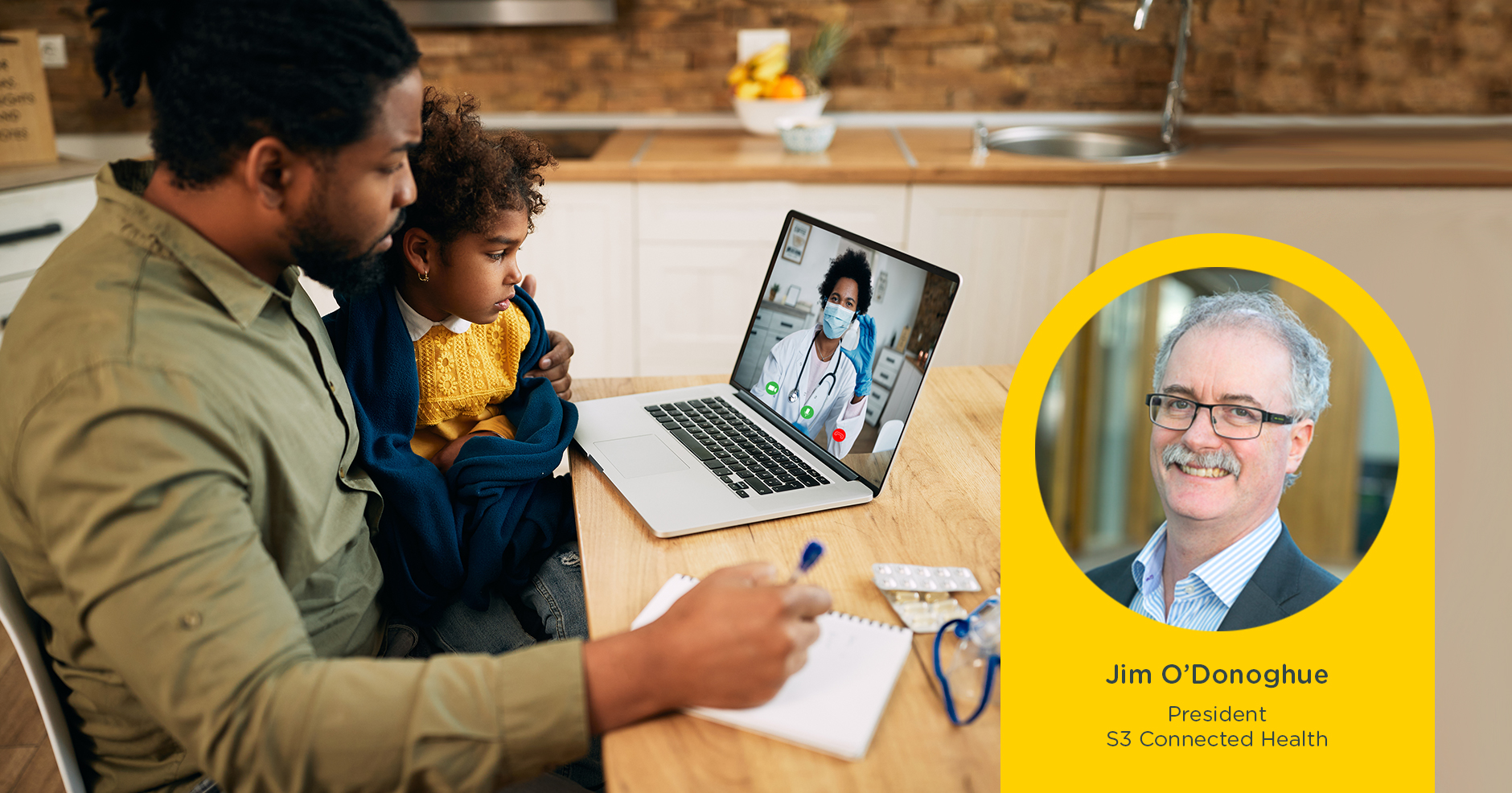The events of 2020 have demonstrated clearly just how vital connectivity is to healthcare.
With coronavirus restrictions limiting patient access to clinicians, and spiraling numbers of critically ill patients requiring doctors to do more with limited resources, connected ecosystems and devices have been vital in maintaining standards of care, saving precious resources, and driving efficiencies.
Medical technology has ensured that routine consultations continue uninterrupted; that data coming out of COVID-19 wards can be gathered, investigated, and turned into action rapidly; and that new tools to battle the pandemic plug seamlessly into existing networks and bring about real results.
Despite all this progress, we’re still just at the beginning of the connectivity journey in healthcare. With the impact of the pandemic continuing, and other challenges on the horizon – not least an ageing population and rising number of chronically ill patients – the need for further connectivity has never been more pronounced.
It’s fitting, then, that digital health and connectivity are the foundation of the five biggest health trends we’ll see in 2021. Here’s exactly how connectivity will drive innovation throughout the year ahead.
Digital health solutions will help better manage healthcare resources
With COVID-19 putting more pressure than ever on limited health resources, optimizing staff resourcing, tools, and space has been vital.
In 2021, digital health solutions will play a key role in continuing to optimize and reduce pressure in stretched hospitals. Digital tools and services will help keep patients out of hospital by giving individuals the data to better self-manage conditions, and also help enable early discharge of patients from hospital by providing technology-driven follow up services, alleviating pressure on HCPs and taking up fewer resources.
Clinicians will benefit from this data, too, gaining more insight on which to base proactive interventions, predictively flag health issues, prevent situations where patients might need urgent or more significant support, and enable more precise, tailored care.
This hybrid model, combining both digital health and in-person care, will see health services deliver better, more optimized care throughout the pandemic and beyond.
Digital health solutions will power more remote care
A key part of managing stretched resources is ensuring care takes place in the appropriate setting. For many patients, this won’t always be a hospital or dedicated care facility.
Indeed, the way patients and clinicians have experienced healthcare throughout the course of 2020 – remotely and virtually – has set a precedent for how healthcare could and should be delivered post-pandemic.
We know consultations can take place remotely with relative ease where necessary, and if telemedicine can be extended beyond just consultations, there’s the possibility to monitor, diagnose, and potentially prevent illnesses via digital means, too.
Such a move would be well-received by patients, with 71% of people surveyed in our own research saying they’d be willing to use digital health solutions in the future.
Expectations have been set, and digital health solutions will be a permanent, and increasingly essential, part of the health landscape moving forward.
Digital health solutions will help manage older and chronically ill patients
By 2050, it’s estimated that one-sixth of the global population will be aged over 65; the number of chronically ill patients is also continuing to rise.
That means significant pressure for healthcare systems, which will require better, more efficient methods of managing those ailments and comorbidities that come with advanced age and/or chronic conditions.
In 2021, digital health solutions will be increasingly deployed to help with this challenge, monitoring the everyday difficulties and symptoms of elderly or chronically ill patients, addressing minor problems remotely, either empowering the patient to do so themselves or with the help of a close friend or relative.
This, in turn, will enable healthcare professionals to focus their time and energy on cases that require direct input from a healthcare practitioner.
Digital health solutions will help balance the COVID-19 response with other treatments
The COVID-19 pandemic has understandably been the priority for healthcare over the past year.
But as providers invested a significant portion of their resources into diagnosing the virus, treating coronavirus patients, and creating a vaccine, other therapy areas have suffered. Patients worldwide have reported being unable to access critical care for cancer, kidney failure, mental health, and other conditions, for example.
As overstretched healthcare systems continue to battle the virus in 2021, while striving to ensure positive outcomes for all, they’ll need to embrace digital tools to improve efficiency and optimize resources.
Devices that collect data on patient well-being and needs will play a key role in driving prevention and early detection of problems, allowing professionals to triage patients effectively while keeping them out of hospitals overwhelmed by COVID cases. Meanwhile, digital health solutions will empower users to self-manage routine treatments where possible, reducing the risk of contracting the virus when visiting clinicians for consultations.
Connected medical devices will bring new solutions and tools to the fore
The pandemic has shown us just how effective the new technologies can be in addressing serious healthcare challenges. That role will continue into 2021.
The primary aim of many of these solutions is better monitoring and detection. By sourcing data from patients, linking up fragmented data streams, and providing clinicians with clearer insights – be it a better picture of the disease they’re treating, or more comprehensive information about a patient’s status – it allows those same clinicians to make more informed decisions.
Tools like wearable devices, in particular, will play a key role in this kind of monitoring and detection this year, leading to more patient insights, better knowledge of a disease more generally, and, subsequently, better treatment for patients.
Artificial intelligence and machine learning are two other technologies that will prove valuable. Once data is collected by a wearable device, for example, AI tools can quickly combine it with other relevant data streams, and analyse it rapidly and accurately.
With artificial intelligence far more adept than humans at handling large amounts of data (and much more competent at noticing trends and patterns within complex data sets), AI tools can help clinicians identify and flag the onset of an illness – or a worsening patient situation – very quickly. That in turn allows doctors to intervene rapidly and improve prognosis, particularly for progressive diseases like cancers.
2020 was a challenging year, and 2021 will bring more challenges, whether it’s continuing the fight against the COVID-19 pandemic, better caring for an aging population, or other as-yet unforeseen issues.
Embracing digital health further and investing in connected devices, and better connected ecosystems, will be essential for overcoming whatever challenges healthcare might face this year.
Jim O'Donoghue
President
S3 Connected Health


